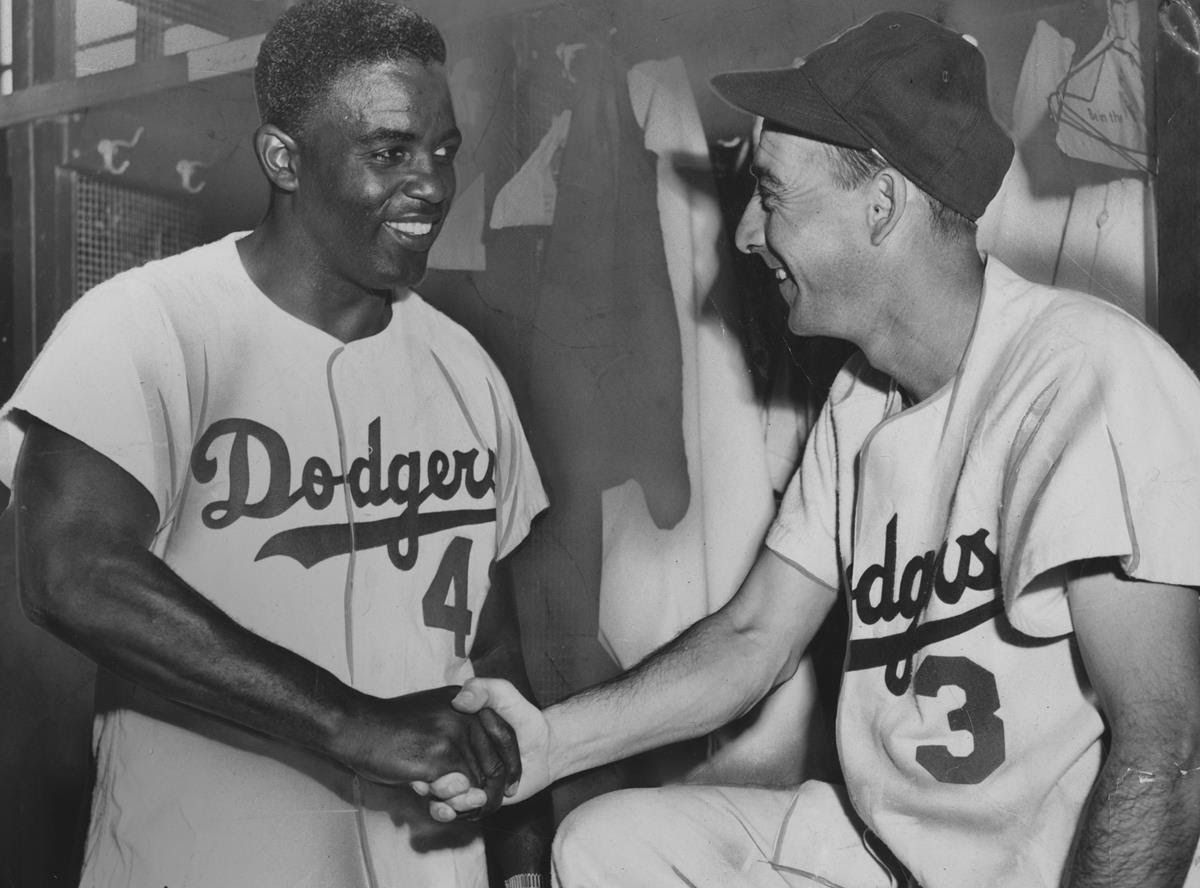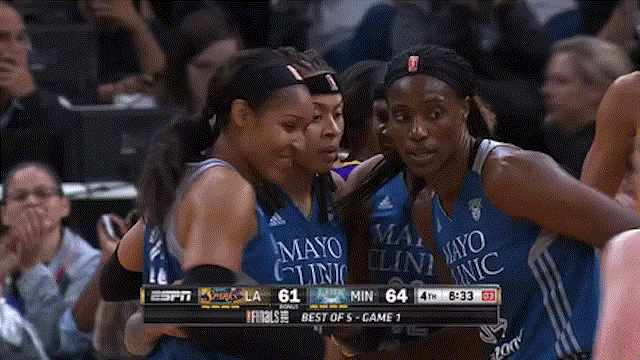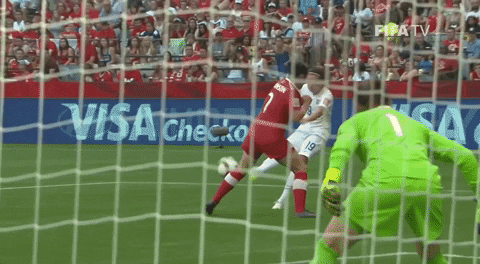Celebrating Black History Month

📓 Segregation and integration
Much like other aspects of life, sports were segregated throughout the U.S. for decades, preventing Black and white athletes from competing with and against each other for much of the early 20th century.
- The exclusion of Black individuals from professional leagues led to the creation of Black-only or “Negro” teams and leagues. But these leagues often had shorter schedules, less funding and worse equipment.
Jackie Robinson famously broke pro baseball’s “color barrier” in 1947, ending a six-decade ban on Black players in MLB. Soon after, the desegregation of the U.S. military in 1948 encouraged more pro sports leagues to begin to slowly integrate.
As for football, Kenny Washington and Woody Strode of the (now-called) LA Rams as well as Marion Motley and Bill Willis of the Cleveland Browns were the first Black players to play in the NFL’s modern era in 1946.
- The NBA officially integrated in 1950 when Earl Lloyd, Nat “Sweetwater” Clifton and Chuck Cooper became the league’s first Black players.
While all of these events represented significant milestones in sports, the process of integration wasn’t a simple one. As they began competing with their white peers, Black athletes faced travel barriers, physical attacks and even death threats.
💪🏾 Black women blazing the trail
On the women’s side of professional sports, integration wasn’t quite the same since several of the leagues we know and love today, didn’t exist yet. *Big sigh*. However, a few Black women helped set the tone for those who would follow decades later.
Althea Gibson, a Black woman often referred to as the “Jackie Robinson of tennis”, was the first Black tennis player to win a Grand Slam title when she won the French Open in 1956, but her road to getting there was littered with obstacles.
- Competing throughout the Jim Crow South during the 1940s, Gibson was denied the opportunity to compete against white players and instead was expected to participate in “Black-only” tours.
However, in 1949, Gibson became the first Black woman to play in an event organized by the United States Lawn Tennis Association (USLTA, now USTA), but she was still barred from competing in what is now the U.S. Open.
- The following year, Alice Marble, a white tennis player and four-time U.S. Open champion, called out the B.S. in a passionate open letter, advocating for Gibson’s admission to the national championship.
As a result, the USLTA invited Gibson to compete in the tournament, thus breaking the color barrier in tennis. Gibson went on to win both Wimbledon and the U.S. Open in 1957 and 1958 and racked up a total of 11 Grand Slam titles in her eight-year career.
- But why stop at tennis? Gibson was also a successful recording artist and, in 1963, she became the first Black woman to compete in the LPGA. Hey Siri, play Renaissance.
It wasn’t until the 1928 Amsterdam Olympics that women’s track and field was an event. And in 1936 (the same year that Jesse Owens became the most successful athlete at the Games in front of Hitler), Tidye Pickett made history as the first Black woman to represent the red, white and blue.
Due to a 12-year hiatus caused by World War II, the London 1948 Summer Olympics were the first Games to be held following the memorable Berlin 1936 Games. The world was ready for change, and Black female athletes brought it.
- Audrey Patterson raced to a third-place finish in the 200-meter dash, becoming the first Black woman to ever win an Olympic medal.
- And history continued the next day when Alice Coachman high jumped into the record books, becoming the first Black woman from any country to win gold.
👏🏾 On the sidelines
While Black athletes are the majority in some pro leagues today there are still clear, lingering effects of segregation in leadership positions throughout the sports world.
🏈 NFL: Fritz Pollard became the first Black head coach (HC) in 1921 (before the NFL and AFL merged) when the Akron Pros hired him to coach (and play on the team, too). One of two Black players in the league at the time, Pollard was barred from dressing in the locker room with his team and was forced to suit up in a car outside the field.
It took nearly 70 years for the league to see a second Black HC — the Las Vegas Raiders hired Art Shell in 1989, making him the first Black HC of the modern era. Since then, progress has remained slow. In the last two decades, four white coaches have been hired for every coach of color, despite non-white players making up an estimated 70 percent of the playing pool.
- Many Black candidates find themselves in temporary HC positions, roles that boast low retention figures. So much so that since 2000, only 21% of interim gigs have led to full-time jobs for Black HCs.
- Former San Francisco 49ers defensive coordinator DeMeco Ryans was recently hired to lead the Houston Texans meaning that the league now has three Black HCs (which is still too few). It also makes the Texans the first team to hire three consecutive Black HCs. Here’s hoping this hire sticks.
Almost exactly one year ago, Brian Flores filed a landmark discrimination lawsuit against the NFL after he was unexpectedly fired by the Miami Dolphins, despite leading the team to back-to-back winning seasons in his third year as HC.
- It’s still yet to be decided whether the case will be resolved in court or by the NFL alone. And if the recent court request is any indication, it seems like we could be waiting quite a long time for progress.
- The Rooney Rule — which requires teams to interview at least two (recently increased from one) external minority candidates for every HC vacancy — is seen as a band-aid solution to this problem, rather than a genuine attempt to heal a deep, systemic wound.
🏀 WNBA & NBA: Widely regarded as one of the most progressive organization, it’s so no surprise that the WNBA and NBA lead the way on diversity. The WNBA currently has three Black HCs in a league of 12 teams, and two are Black women.
Similar to the NFL and the W, the majority of NBA players are Black, about 72% as of 2022. And those numbers translate to team leadership: over 70 Black men have held the HC role since Boston Celtics legend Bill Russell became the league’s first Black HC in 1966.
- Today, 16 of the 30 HC roles are held by Black men. A record-high for the league.
- That said, there’s still cause for concern. Data suggests that Black HCs are given less leeway (aka room for failure) than their white counterparts.
⚾️ MLB: In 1999, MLB instituted the “Selig Rule,” which requires teams to interview at least one minority candidate for every managerial or front office opening. But, in a league where the majority of players are white, the rule has done little to diversify the managerial ranks.
- There are currently only two Black managers in the dugouts, and only 16 Black men have held the role since Cleveland’s Frank Robinson became the first in 1975.
- Plus, just like the Rooney Rule, the Selig Rule has made some candidates feel as if they’re being interviewed just to check a box. It’s time for change.
🗣️ Black athletes calling for change
Throughout history, Black athletes have used their platforms to play a direct role in social justice movements, contributing to real political and cultural changes.
Most recently, the WNBA was at the forefront of change and activism throughout 2020. The league dedicated that season to Breonna Taylor, a 26-year-old Black woman who was killed by police inside her own home in March 2020.
- Players observed a 26-second moment of silence prior to the first game’s tip-off, wore Taylor’s name across their backs all season long and continually uplifted the #SayHerName campaign, highlighting the Black women lost to police violence.
Athletes across almost all professional leagues had the world’s attention after they conducted wildcat strikes in the summer of 2020, following the police shooting of Jacob Blake in Kenosha, Wisconsin in August, and the murder of George Floyd in Minneapolis, Minnesota in May.
- The unprecedented strike lasted only a few days,but a clear message was sent and the impact was profound. NBA players returned to action only after the league met their demands, which included the formation of a social justice coalition plus improved voting opportunities in team markets.
- Other athletes followed suit, calling for systemic changes in their leagues, but as we’ve mentioned, many of these changes still need to be addressed.
- The movement also underscored just how influential and effective athletes can be. Players rallied together, harnessed their collective voices and platforms and galvanized real tangible action. Truly unforgettable.
After the death of Tyre Nichols — a 29-year-old Black man who was fatally beaten by Memphis police officers last month — a number of prominent Black athletes once again shared their emotions, outrage and fear while publicly speaking out about the continued police violence against Black citizens.
- As Phoenix Suns star Chris Paul put it, "change is needed at all levels and we all need to do our part. We can't lose our humanity as a society.”
Enjoying this article? Want more?
Sign up for The GIST and receive the latest sports news straight to your inbox three times a week.

